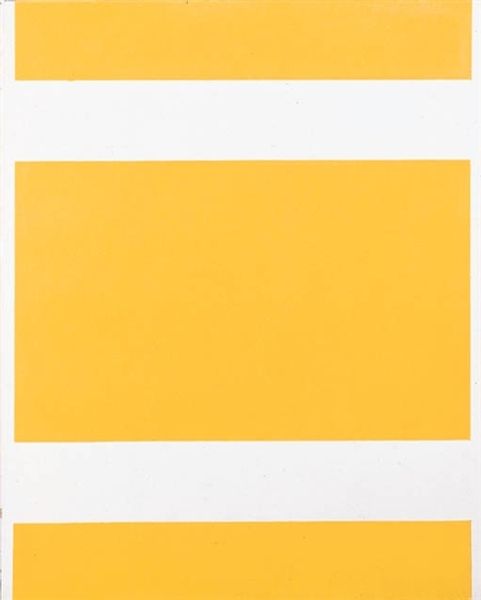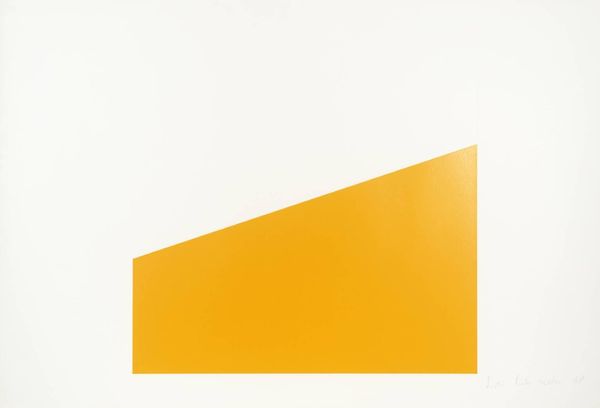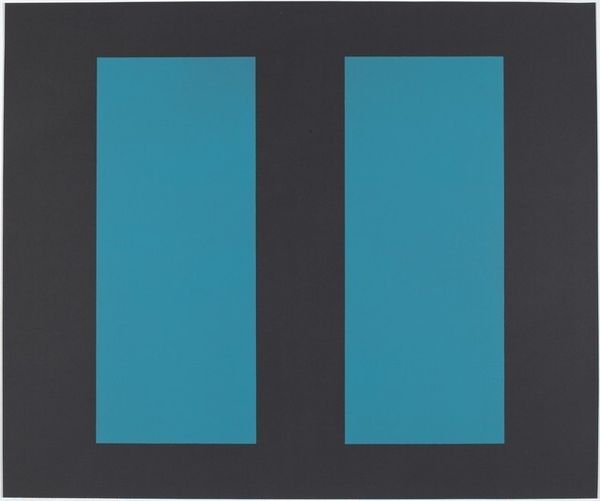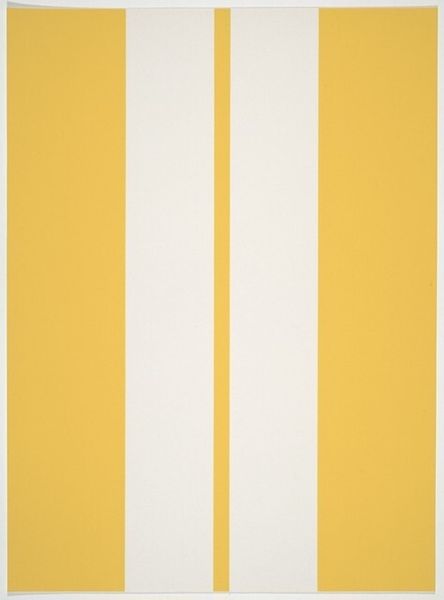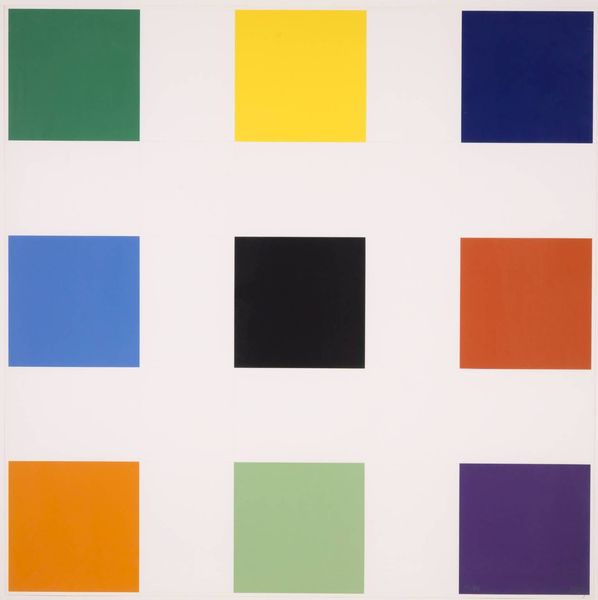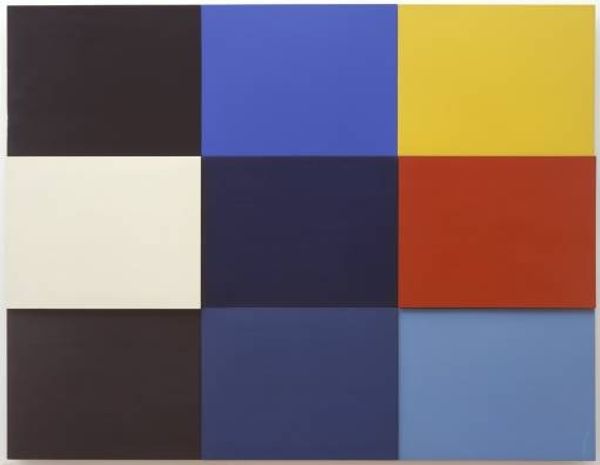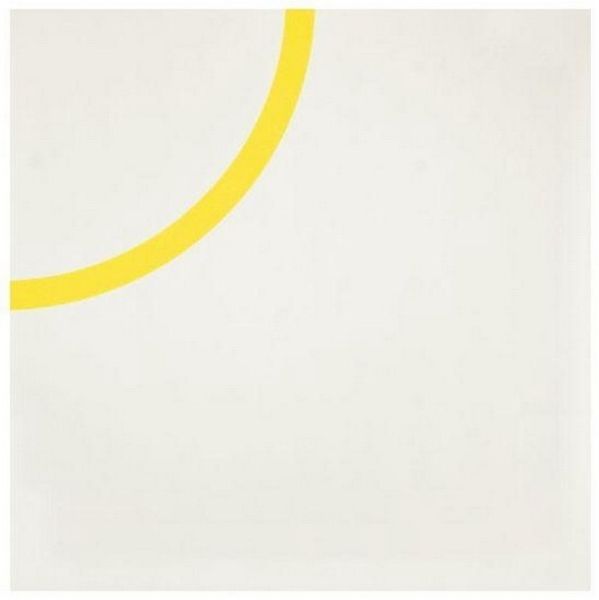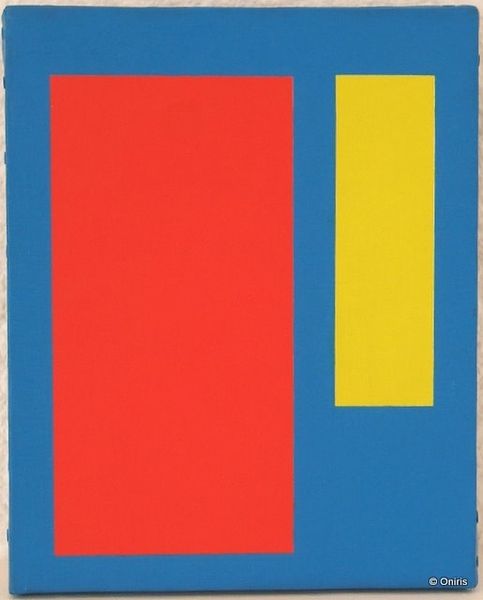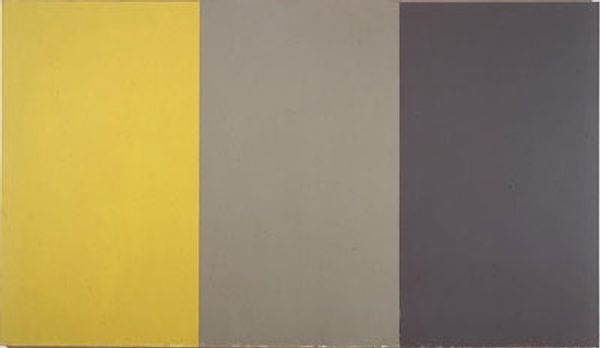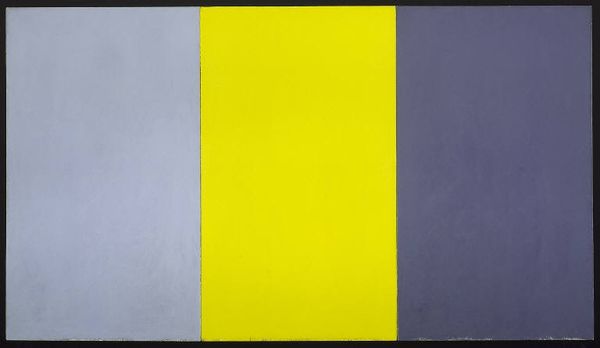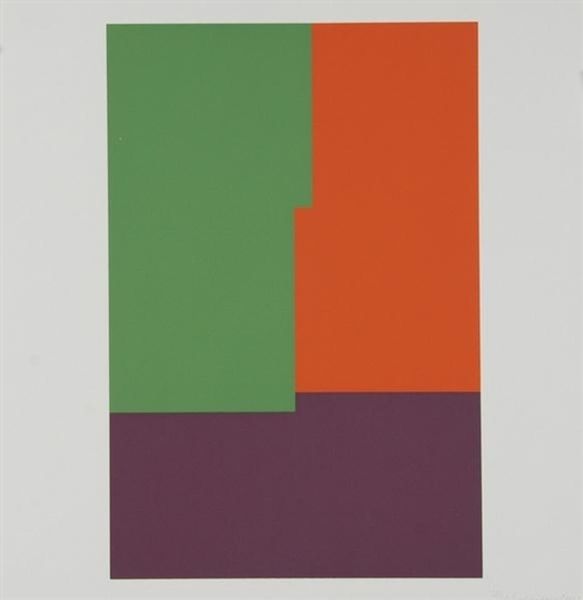
#
abstract-expressionism
#
non-objective-art
#
minimalism
# print
#
op art
#
colour-field-painting
#
geometric pattern
#
minimal pattern
#
geometric
#
simple pattern
#
abstraction
#
hard-edge-painting
Copyright: National Gallery of Art: CC0 1.0
Curator: John McLaughlin’s "Untitled" from 1963, a screenprint of geometric forms, certainly catches the eye with its stark simplicity. Editor: Instantly, it gives me the feeling of…quiet authority. Like standing before an unadorned temple. Do you get that? Curator: I’m intrigued by how this work engages with industrial printmaking processes, making the supposed lofty ideals of abstract expressionism accessible and reproducible. Look at the color blocking – what are your thoughts about that compositional choice? Editor: Well, the vertical rectangles of yellow and grey…there's such a grounding quality to it! It’s interesting, the piece walks this fine line between rigid geometry and the warmth those colours exude. A conversation. I can almost hear them debating. Curator: Exactly. It reflects the cultural context of the time—a move away from individual expression toward a focus on serial production and the democratisation of art consumption, not to mention, as you point out, its debt to color field painting. Editor: This artwork sort of…subverts expectation. I fully expect an austere intellectual exercise, yet feel invited into this meditative space by how boldly McLaughlin uses geometry in conjunction with this vibrant yellow and the contemplative gray. Curator: We have the visual vocabulary of minimalist aesthetics at play, right in front of us; you notice the sharp edges, the limited palette? But McLaughlin wasn't striving to erase the hand of the artist. These prints showcase human intervention and material presence despite their clean aesthetic. Editor: It’s thought-provoking to imagine McLaughlin, somewhere in California, carefully pulling prints like this one. Bringing it to life, over and over again, each with its slightly distinctive signature, even with all of this geometric form. Curator: Indeed. Examining how minimalist abstraction in Southern California intertwined the rhetoric of high art and industrial manufacturing gives a crucial point about our historical interpretation. Editor: Considering this now, the starkness of the geometric configuration feels more like an invitation than a demand. To question, to ponder, to revel. Curator: So, by deconstructing visual conventions, McLaughlin created an access point toward art in a way that mirrored the increasing availability of goods in postwar America. Editor: It does stay with you. More than just pretty rectangles – they trigger consideration, right? About how simple elements speak such volume when composed artfully.
Comments
No comments
Be the first to comment and join the conversation on the ultimate creative platform.

